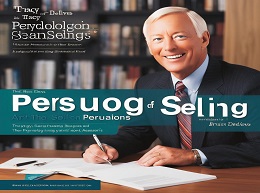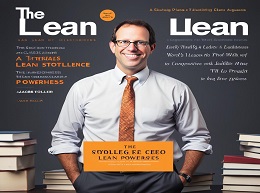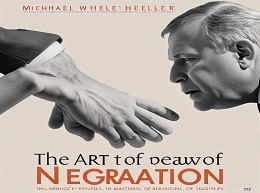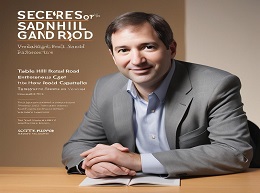The Other Guy Blinked: How Pepsi Won the Cola Wars
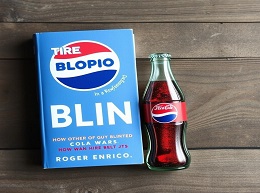
The Battle of the Colas: A Deep Dive into "The Other Guy Blinked"
"The Other Guy Blinked: How Pepsi Won the Cola Wars" by Roger Enrico is a riveting account of one of the most intense corporate battles in history—the Cola Wars. Written by Enrico, who served as PepsiCo’s President and CEO, the book offers an insider’s perspective on how Pepsi managed to challenge and eventually outmaneuver its archrival, Coca-Cola. This review will explore the key themes, strategies, and lessons from the book, providing an engaging narrative for readers interested in business strategy, marketing, and corporate competition.
A Brief History of Pepsi and Coca-Cola
The rivalry between Pepsi and Coca-Cola dates back to the late 19th and early 20th centuries. Coca-Cola, invented by John Stith Pemberton in 1886, quickly became a dominant force in the soft drink industry. Pepsi, created by Caleb Bradham in 1898, faced numerous challenges, including bankruptcy, before emerging as a formidable competitor.
Example: Coca-Cola’s Market Dominance
By the mid-20th century, Coca-Cola had established itself as the leading soft drink brand globally, with a strong market presence and a powerful brand image. Pepsi, on the other hand, was seen as the underdog, fighting for market share in a highly competitive industry.
Roger Enrico’s Vision and Strategy
When Roger Enrico took over as PepsiCo’s President in the 1970s, he brought with him a bold vision and an aggressive strategy to take on Coca-Cola. Enrico’s approach was characterized by creativity, risk-taking, and an unwavering commitment to winning the Cola Wars.
Practical Insight: The Pepsi Challenge
One of the most iconic moves under Enrico’s leadership was the Pepsi Challenge. This blind taste test campaign invited consumers to choose between Pepsi and Coca-Cola, with results often favoring Pepsi. The campaign not only boosted Pepsi’s sales but also challenged Coca-Cola’s dominance directly.
Marketing Brilliance
Enrico’s marketing strategies were pivotal in reshaping Pepsi’s image and capturing the public’s imagination. He understood the power of branding and leveraged it to position Pepsi as the youthful, trendy alternative to Coca-Cola.
Example: Celebrity Endorsements
Pepsi’s use of celebrity endorsements, featuring stars like Michael Jackson and Madonna, created a cool and aspirational image for the brand. These high-profile endorsements helped Pepsi connect with younger audiences and differentiate itself from Coca-Cola.
Innovative Advertising Campaigns
Pepsi’s advertising campaigns under Enrico were innovative and often provocative, aiming to directly challenge Coca-Cola’s supremacy. The company wasn’t afraid to take risks and push boundaries in its quest to gain market share.
Practical Insight: The “Pepsi Generation” Campaign
The “Pepsi Generation” campaign, launched in the 1960s, was a masterstroke in targeting the youth demographic. By aligning Pepsi with the energy and dynamism of the younger generation, the campaign created a strong emotional connection with its audience.
Product Diversification and Innovation
Enrico recognized the importance of diversifying PepsiCo’s product offerings to stay competitive. Under his leadership, Pepsi expanded its product line and ventured into new markets, ensuring it wasn’t solely reliant on its flagship cola product.
Example: Acquisition of Frito-Lay
The acquisition of Frito-Lay in 1965 was a strategic move that diversified PepsiCo’s portfolio and strengthened its position in the snack food market. This acquisition allowed Pepsi to leverage cross-promotional opportunities and enhance its overall market presence.
Outmaneuvering the Competition
Enrico’s book delves into the psychological aspects of the Cola Wars, highlighting how Pepsi used psychological tactics to outmaneuver Coca-Cola. By creating doubt about Coca-Cola’s superiority and positioning Pepsi as the underdog, Enrico effectively turned the competition into a psychological battle.
Practical Insight: The New Coke Debacle
The introduction of New Coke in 1985 by Coca-Cola was a significant misstep that Pepsi capitalized on. Coca-Cola’s attempt to reformulate its classic drink backfired, leading to public outrage and a surge in Pepsi’s popularity. Enrico’s strategic response to this blunder showcased his adeptness at exploiting his competitor’s weaknesses.
Building a Resilient Corporate Culture
Enrico’s leadership also focused on building a resilient corporate culture within PepsiCo. He emphasized teamwork, innovation, and a relentless drive to succeed, which galvanized the company’s workforce and fostered a culture of excellence.
Example: Employee Engagement Initiatives
Enrico introduced various initiatives to engage and motivate employees, including performance-based incentives and opportunities for professional growth. This focus on employee satisfaction and development helped create a loyal and high-performing workforce.
The Importance of Visionary Leadership
One of the key takeaways from Enrico’s book is the importance of visionary leadership in driving organizational success. Enrico’s bold vision and strategic foresight were instrumental in transforming PepsiCo and challenging Coca-Cola’s dominance.
Practical Insight: Long-Term Planning
Enrico’s long-term planning and strategic investments in marketing, product development, and talent acquisition laid the foundation for PepsiCo’s sustained growth. His ability to think ahead and anticipate market trends proved crucial in outpacing the competition.
Embracing Risk and Innovation
Enrico’s willingness to embrace risk and foster innovation is another vital lesson for aspiring business leaders. His approach demonstrated that calculated risks and bold initiatives could yield significant rewards, even in highly competitive markets.
Example: The Creation of Diet Pepsi
The introduction of Diet Pepsi in the 1960s was a risky but ultimately successful move that tapped into the growing demand for low-calorie beverages. This innovation not only expanded Pepsi’s product line but also reinforced its reputation as a forward-thinking company.
Leveraging Marketing and Branding
Enrico’s emphasis on marketing and branding underscores the power of these elements in shaping consumer perceptions and driving business success. His ability to create compelling narratives and connect with audiences on an emotional level was a cornerstone of Pepsi’s strategy.
Practical Insight: Consistent Brand Messaging
Pepsi’s consistent brand messaging, focused on youth, energy, and innovation, helped it build a strong and cohesive brand identity. This consistency reinforced consumer loyalty and differentiated Pepsi from its competitors.
Winning the Cola Wars
"The Other Guy Blinked: How Pepsi Won the Cola Wars" is a captivating and insightful account of one of the most iconic corporate battles in history. Through strategic brilliance, innovative marketing, and visionary leadership, Roger Enrico led PepsiCo to challenge and ultimately surpass Coca-Cola in key markets. The book offers valuable lessons in leadership, strategy, and the power of perseverance, making it a must-read for anyone interested in business and competitive strategy.
